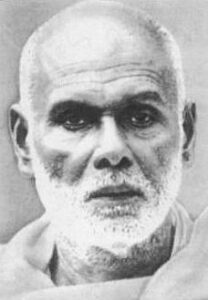Published on: January 7, 2023
Narayana Guru
Narayana Guru
Why in news? A delegation led by Minister for Kannada and Culture and Energy to Chief Minister Basavaraj Bommai and submitted a petition seeking the establishment of a corporation after the 19th-century social reformer Narayana Guru.
Highlights:
- The demand is likely to be included in the State Budget to be presented by Chief minister , who also holds the Finance portfolio.
- The corporation should be aimed at uplifting the economically disadvantaged Billava community, the followers of Narayana Guru, by extending them various facilities, like other government-run corporations in the State
- Narayana Guru fought against untouchability and his thoughts and preachings are ever relevant
About Narayana Guru
- He was a philosopher, spiritual leader and social reformer in India.
- Led a reform movement against the injustice in the caste-ridden society of Kerala to promote spiritual enlightenment and social equality
- Philosophy: Vedanta
The Sree Narayana Dharma Paripalana Yogam (SNDP Yogam)
- Founded : 1903
- With the efforts of Padmanabhan Palpu,(Dr. Palpu), with Narayana Guru as its founder president.
Motto :One Caste, One Religion, One God for All
Aruvippuram Pratishta:
- Narayana guru consecrated a piece of rock taken from the river, as the idol of Shiva, has since become the Aruvippuram Shiva Temple
- The act, later came to be known as Aruvipuram Pratishta, created a social commotion among the upper caste who questioned Guru’s right to consecrate the idol
- To reply that “This is not a Brahmin Shiva but an Ezhava Shiva” later became a famous quote, used against casteism
Vaikom Satyagraha
- Agitation by the lower caste against untouchability in Hindu society
- Location : Travancore.
- Reason for the protest: Narayana Guru was stopped from passing through a road leading to Vaikom Temple by an upper caste person
Follower during the movement:
- Kumaran Asan and Muloor S.Padmanabha Panicker, composed poems in protest of the incident.
- K. Madhavan petitioned the Sree Moolam Popular Assembly in 1918 for rights to enter the temple and worship, regardless of the caste.
- Paryatanam movement : K. Kelappan and K. P. Kesava Menon, formed a committee and announced movement and with the support of Mahatma Gandhi
- The agitation developed into a mass movement which resulted in the opening of the temple as well as three roads leading to it to people of all castes.
- This influenced the Temple Entry Proclamation of 1936
Sivagiri pilgrimage
- Conceived by three of the disciples : Vallabhasseri Govindan Vaidyar, T. K. Kittan Writer and Muloor S. Padmanabha Panicker which Guru approved with his own recommendation
- Goals: Promotion of education, cleanliness, devotion to God, organization, agriculture, trade, handicrafts, and technical training
Writing
- Atmopadesa Śatakam (hundred-verse spiritual poem) and Daiva Dasakam (universal prayer in ten verses).
- Thirukural of Valluvar, Ishavasya Upanishad and Ozhivil Odukkam of Kannudaiya Vallalaar.
Philosphy
- Non-dualistic philosophy of Adi Sankara by bringing it into practice by adding the concepts of social equality and universal brotherhood.
All Religions’ Conference
- Guru organized an All Religion Conference in 1923 at Alwaye Advaita Ashram,
- Reported to be first such event in India
- To counter the religious conversions Ezhava community

